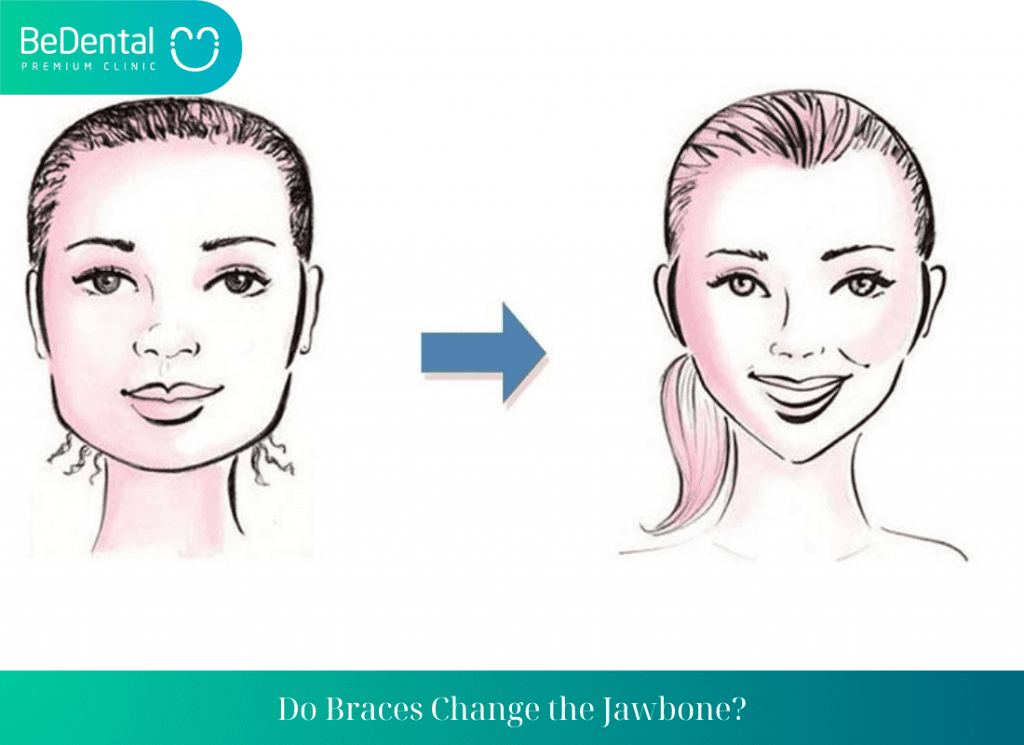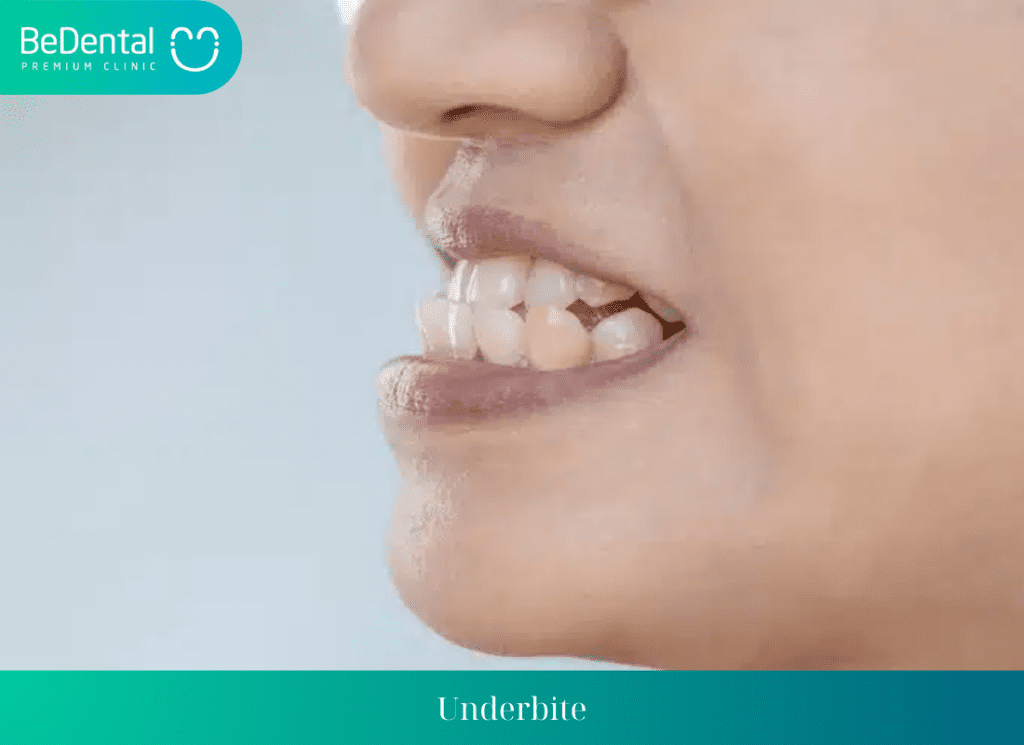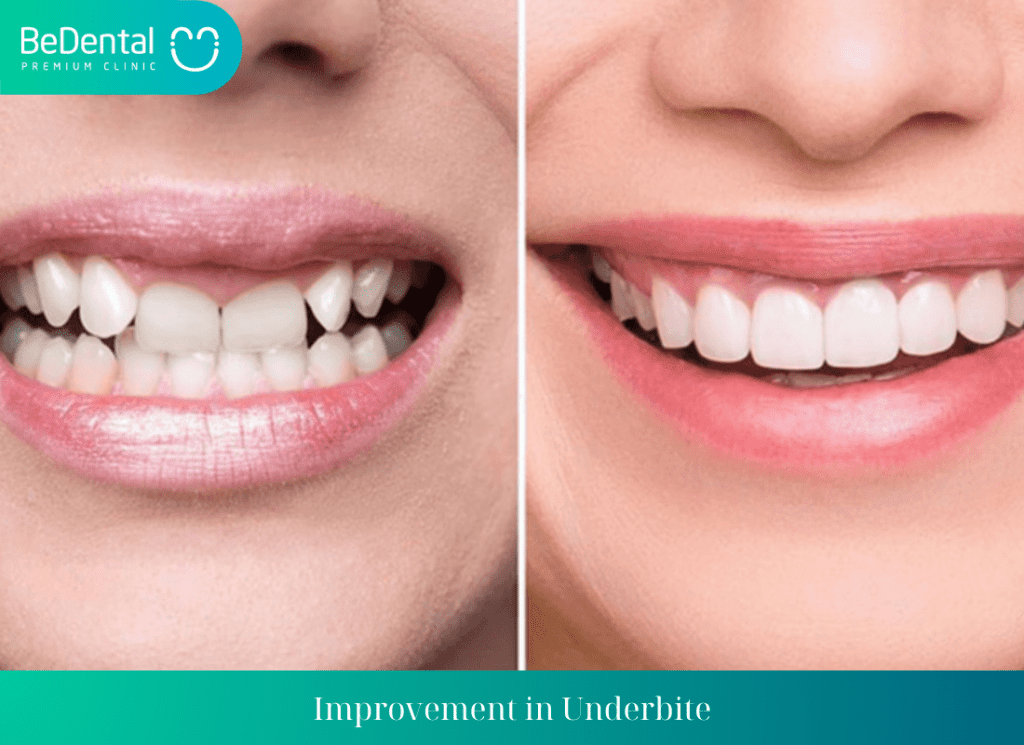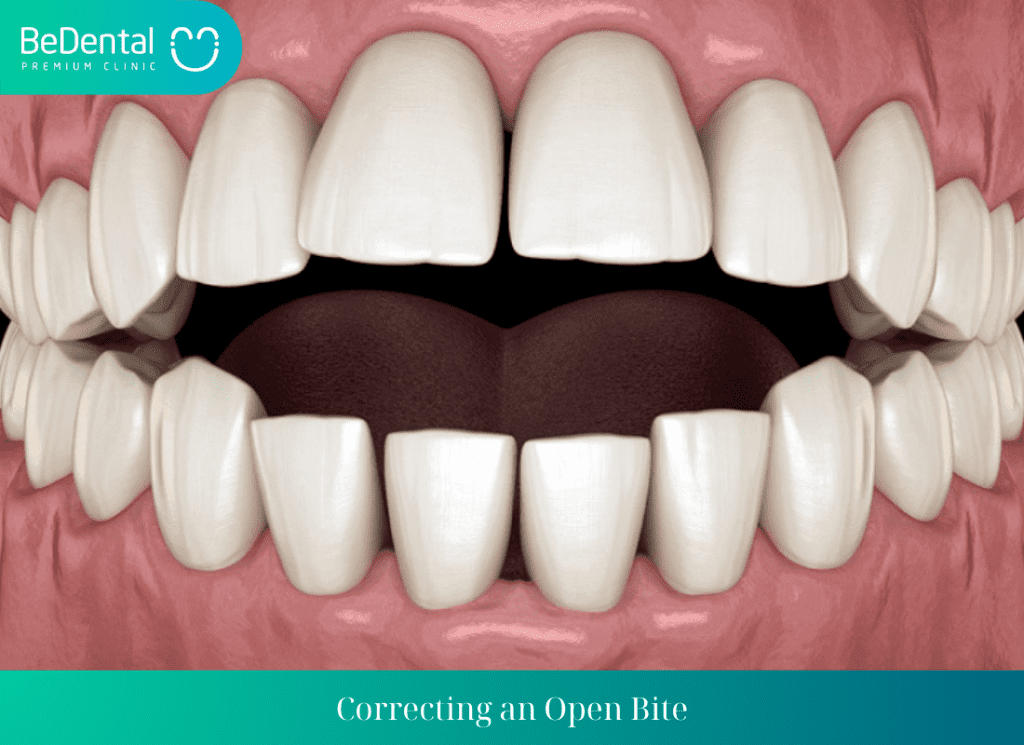Braces not only boost confidence but also have a positive impact on your health and appearance. By adjusting the position of your teeth and jaw, braces help improve speech, reduce tooth wear, and lower the risk of oral health issues. The article below, BeDental will answer your question for ” Do Braces Change the Jawbone ”
Do Braces Change the Jawbone?
Braces are a solution for improving conditions such as protruding teeth, underbites, crowded teeth, etc. The dentist uses various appliances (braces archwires, bands, etc.) and brackets attached to the teeth, applying appropriate force to move the teeth to the desired positions. In theory, the changes from braces only occur in the teeth, with no changes to the jawbone.
See more: Bone Resorption when wearing braces
However, in practice, many skilled dentists can create a treatment plan that not only adjusts the position of the teeth but also brings about slight changes in the jawbone. This is especially true for children, where the jawbone can undergo more significant positive changes during orthodontic treatment.

The jawbone helps anchor the position of the teeth, so when the teeth shift positions, the jawbone will also undergo corresponding changes. At this point, the jawline (the jaw base) that helps shape the face will also change accordingly.
Braces Alter the Jawline – Change Teeth Position – Balance Facial Muscles and Teeth
Here are ways in which braces can change the jawbone and jawline:
- Changing Teeth Position: When braces apply force to the teeth, this pressure also affects the bone. As a result, changes occur in the bone, and the teeth shift their positions. For example, if you have an underbite where the lower teeth grow forward, after braces straighten them, your jawline will become more refined.
- Balancing Facial Muscles and Teeth: The jawline is also related to the balance between the muscles and skin in the lower face. If you have a bite issue such as an overbite, you may not be able to close your mouth properly. When the chin muscles are strained, it can also create an abnormal jawline. After correcting the bite issue through braces, the muscles will relax. This means that by changing the position of the teeth and balancing the muscles, braces can alter the jawline.
See more: Things to know when wearing braces
- Minor Changes to the Jawline: While braces cannot change the entire jaw structure, they can make minor adjustments to the jawline. These adjustments in tooth position and muscle balance can contribute to a more symmetrical and harmonious jawline, enhancing a natural and attractive appearance.
Understanding the Different Types of Malocclusions
Malocclusions, or misalignments of the teeth and jaws, are common dental issues that can impact both the appearance of your smile and your oral health. Understanding the different types of malocclusions is essential in recognizing the specific challenges each presents and how orthodontic treatment can effectively address them. Here’s an overview of some of the most common types of malocclusions:
Overbite
An overbite occurs when the upper front teeth overlap significantly with the lower front teeth. While a slight overbite is normal, an excessive overbite can lead to issues such as wear on the lower teeth, jaw pain, and an increased risk of injury to the front teeth.
Orthodontic treatment for overbite typically involves using braces or clear aligners to gradually move the teeth into a more balanced alignment. In severe cases, additional appliances like bite plates may be used to correct the bite more effectively.
See more: What is Abutment?
Underbite
An underbite is the opposite of an overbite, where the lower front teeth extend beyond the upper front teeth. This condition can cause difficulties in chewing, speech problems, and excessive wear on the teeth.

Treatment for an underbite often requires braces or clear aligners to shift the teeth into the correct position. In more severe cases, especially those involving significant jaw misalignment, surgical intervention may be necessary to achieve the desired results.
Crossbite
A crossbite occurs when some of the upper teeth sit inside the lower teeth rather than outside when the mouth is closed. This misalignment can happen at the front or the sides of the mouth and may affect one or multiple teeth.
Crossbites can lead to uneven wear on the teeth, gum disease, and even bone loss if left untreated. Orthodontic solutions for crossbite include braces, clear aligners, and sometimes a palatal expander, which widens the upper jaw to correct the bite.
See more: Signs of gum recession during braces
Open Bite
An open bite is a condition where the upper and lower teeth do not touch when the mouth is fully closed, leaving a gap between them. This can occur in the front teeth (anterior open bite) or the back teeth (posterior open bite).
Open bites can cause difficulties in biting and chewing food and may lead to speech problems. Treatment typically involves braces to move the teeth into proper alignment. In cases where the open bite is due to jawbone structure rather than tooth positioning, surgery may be required.
Do Braces Change Your Face?
Braces – Improve Your Face and Smile. This includes:
More Natural Bite
People with bite misalignment often have an asymmetrical face, which looks tense and unnatural. When braces correct the bite into the right position, it improves facial symmetry, and a more natural bite also enhances chewing function.
Improvement in Underbite

Underbite is a condition where the lower jaw protrudes outward compared to the upper jaw, giving the face a bulldog-like appearance. This sometimes affects speech. Braces can alter the jawbone structure to bring the two jaws into their ideal positions, making the face look balanced and significantly improving the underbite condition. Particularly after correcting an underbite with braces, the nose may appear more elevated.
See more: Braces or Ceramic Veneers: Pros and cons
However, if your lower jaw protrudes excessively, surgical intervention might be necessary.
Correcting Overbite
Opposite to an underbite, an overbite (also known as deep bite) is when the lower jaw is pushed too far inward compared to the upper jaw, which can lead to a weak chin and hollow cheeks. Braces will pull the lower jaw outward to an appropriate level, correcting the overbite and making the face look more balanced and natural.
Correcting an Open Bite

Correcting Crossbite
Crossbite is a condition where the upper and lower teeth in the jaw arch do not align evenly, causing an asymmetric and unsymmetrical appearance between the two sets of teeth. This issue can be rectified through orthodontic treatment, where the teeth are aligned to achieve an ideal symmetrical state.
Addressing Facial Asymmetry
Typically, the upper and lower teeth are aligned along the same axis, located in the center of the face and lips. Facial asymmetry occurs when there is too much or too little spacing between the teeth, leading to a shift in the midline of the face.
The braces process helps adjust facial asymmetry by placing brackets and moving the teeth and jawbone. Braces create balance and harmony for asymmetric teeth and jaw, as well as alter the muscle and skin around the mouth accordingly.
See more: What Is the Appropriate Age for Braces?
The result is a more balanced and harmonious facial structure, realigning the midline of the face, enhancing attractiveness and confidence.
Improving Jawbone and Jawline
In addition to improving overbites and underbites, the braces process can alter the jawbone and positively impact the entire face. Adjusting the jawbone and jawline helps create balance and proper development for the face, resulting in an overall perfect appearance.
Support for Enhancing Cheekbones
Through the braces process, orthodontic specialists can shift the upper jawbone and teeth to an optimal position. When the upper teeth grow too far forward or backward compared to their normal position, braces can adjust and realign them to create a balance and harmony for the cheekbone structure.
Narrowing Gaps and Aligning Teeth Properly: Another issue related to cheekbones is uneven spacing between the teeth, leading to a protruding cheek. During the braces process, experts help narrow the gaps and align teeth properly. This contributes to the beauty of the cheekbone and face overall.
Providing a Natural Look for the Face

When you have these types of bite misalignments, it can prevent your face from looking natural.
The purpose of braces is to correct all these bite issues and give you a natural appearance.
The position and alignment of the teeth in your mouth affect the appearance of your face. After completing orthodontic treatment, you will have a more beautiful and natural smile.
Cases Where Braces Cannot Improve the Jaw
There will be some cases where braces cannot apply enough force to change the jawbone. Most of these cases will require surgical intervention or other treatment methods, and these cases include:
- Severely protruding jaw (Class 3 malocclusion).
- Large and elongated jaw.
- Short and thin jaw.
- Severely upward-turned and short jaw.
See more: What is Orthodontic archwire?
If you fall into these cases, you should carefully consult and consider other methods besides braces.
In summary, the question “Do Braces Change the Jawbone?” depends on bite adjustment, realignment of teeth, and maintaining facial muscle balance. In some cases, this change may not be very noticeable, but your appearance will still become more natural and attractive. If you have any questions, please contact your dentist directly for advice and to develop a jaw improvement plan that suits your individual condition.
Conclusion:
Orthodontic treatment, particularly through the use of braces, plays a crucial role in correcting dental and jaw misalignments that can affect both the appearance and functionality of your teeth and face. By addressing issues such as overbite, underbite, crowding, and facial asymmetry, braces not only improve the aesthetic appeal of your smile but also contribute to a more balanced and natural facial appearance.
While some severe cases may require surgical intervention, for most individuals, orthodontics can provide significant improvements. Consulting with a qualified orthodontist will help you determine the best treatment plan tailored to your specific needs, ultimately leading to a more confident and attractive look.
Tư vấn chuyên môn bài viết:
BÁC SĨ DƯƠNG THỊ THÙY NGA





